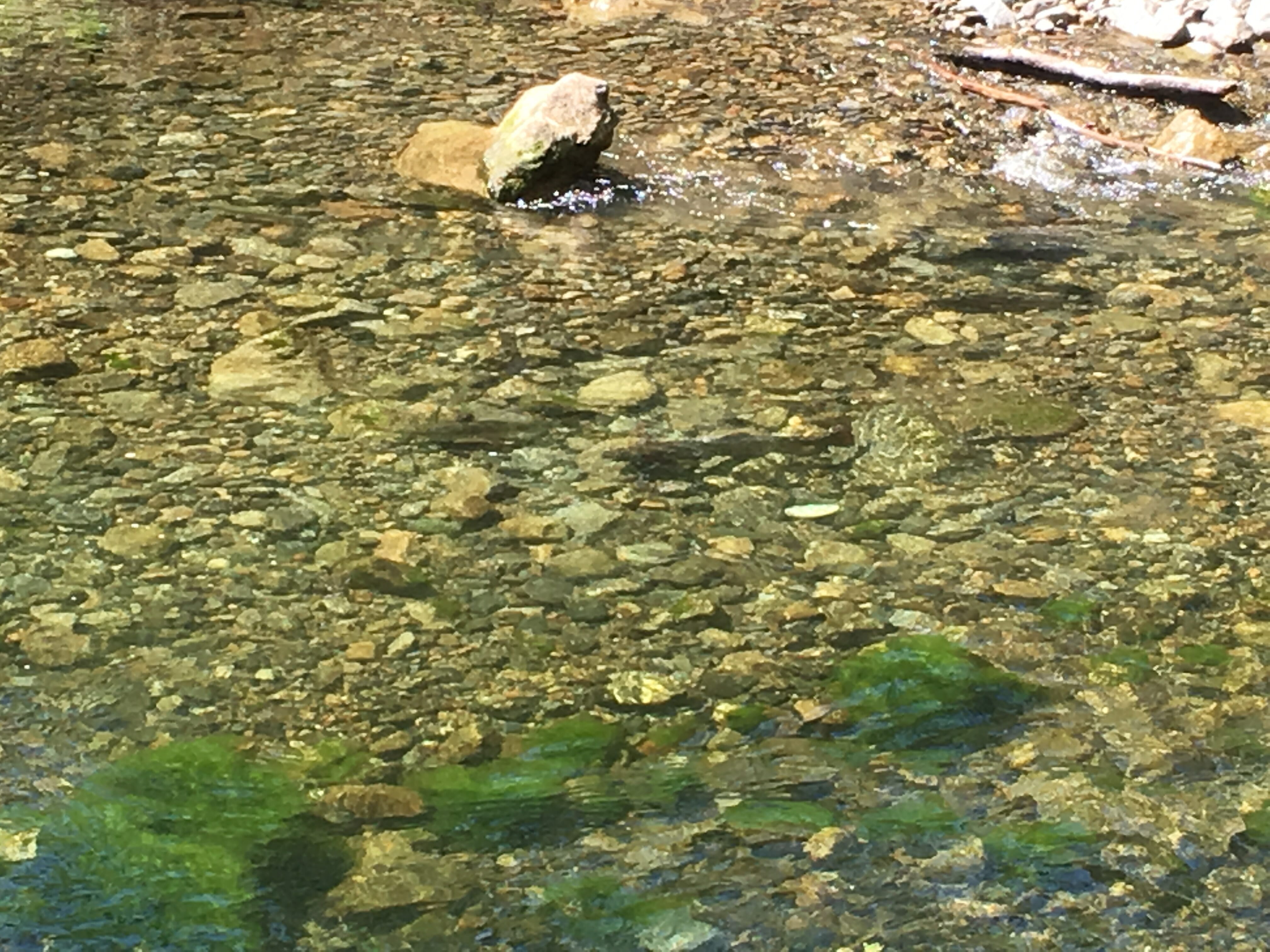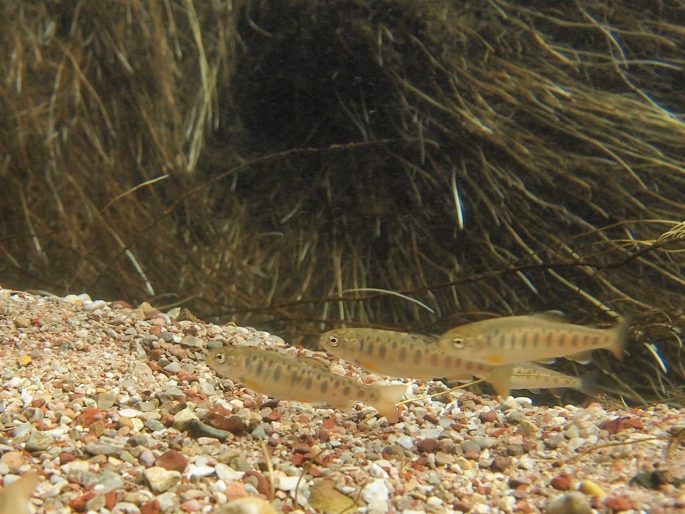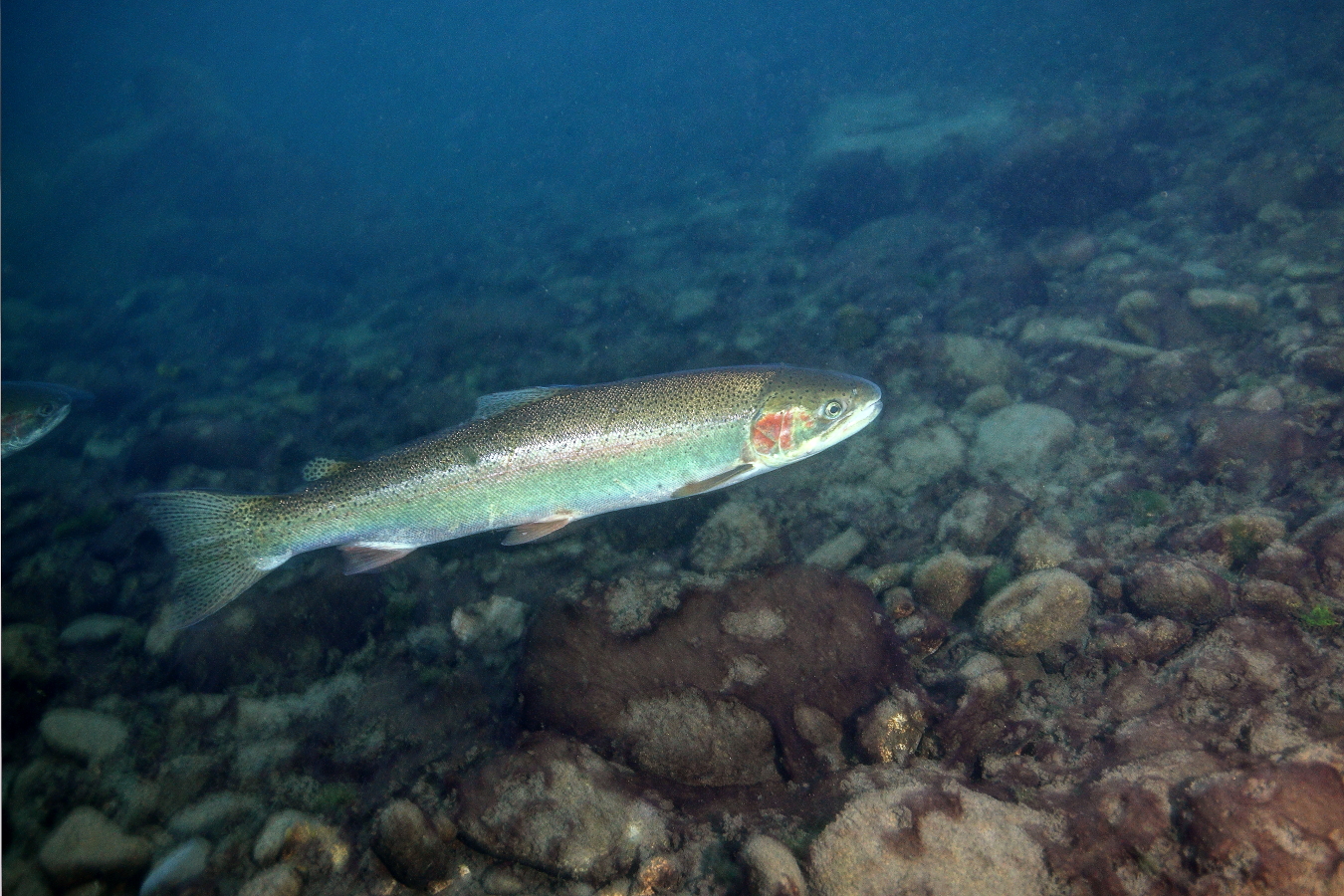By Natalie Stauffer-Olsen, PhD.
It is always exciting when new technology becomes available that can help us understand, manage and protect wild steelhead, the mavericks of the Pacific salmonids.
Steelhead and rainbow trout populations can be difficult to predict, model and understand because of their very plastic (scientific term for highly variable) life histories, from juveniles to adults. What’s more, their plastic life histories are believed to be the result of both genetic and environmental factors (Kelson and Carlson 2019), meaning their behaviors can change greatly in different years and locations.
As a result, monitoring the distributions and numbers of O. mykiss populations can be very difficult and often requires costly and time-intensive methods that are not perfectly accurate (i.e. weirs, cameras, snorkel surveys). Thus, our science team here at Trout Unlimited is very interested in the potential for the evolving technology of environmental DNA (eDNA) to improve monitoring and management of O. mykiss and other salmonids.
The suite of methods collectively known as eDNA consists of taking samples of water from a stream or river (hence the term “environmental,” because the samples contain DNA from lots of organisms in the riverine environment) and analyzing the DNA in those samples. This allows scientists to determine the presence and absence of aquatic species, like fish (Rees et al. 2014; Goldberg et al. 2016).
This is possible because fish and other organisms “shed” DNA during life, and the traces of that DNA can be extracted after it is released into the environment and then analyzed. It is also helpful because eDNA is much less invasive than traditional sampling methods such as e-fishing where we need to actually capture and sample fish. It can also be less expensive and collecting water samples is so easy that we can use volunteers to do it.
This species detection method is able to compare the partially degraded DNA in the water samples to genetic libraries that have DNA for lots of different fish species. eDNA methods require that species have good DNA libraries created from fresh (non-degraded) DNA samples. As soon as DNA is shed from the body, it starts to degrade. The more degraded the DNA, the more difficult it is to compare to a complete DNA sequence.
(By the way, this same methodology is used to create full DNA sequences for extinct animals like woolly mammoths: scientists compare degraded DNA from woolly mammoths to new DNA from their closest living relative, the elephant, then put the pieces together and fill in the missing parts.)
As a result of DNA degrading in the environment, there are important temporal and geographic factors that impact the success of eDNA in species detection. In general, in stream systems the less time lapsed between shedding of DNA and collection of it, the more likely the possibility of getting accurate results.
In addition to temporal and geographic factors, there are other environmental attributes to consider when determining whether eDNA is an appropriate method for detecting fish species such as O. mykiss. For example, temperature and sunlight both impact how quickly DNA in the environment degrades, which can affect when and where sampling should be done. eDNA still isn’t a perfectly sharpened tool because overall, there isn’t a consistent relationship between where fish are and how much DNA there is, or the quality of the DNA in the vicinity of the fish. These inconsistent relationships limit the usage of this tool in some ways.
Despite the challenges associated with identifying species by shed DNA, there are clearly many potential benefits to using eDNA to detect fish and the scientific literature generally agrees that eDNA can be an effective tool in species detection in freshwater ecosystems (Levi et al. 2018, Goldberg et al. 2016; Rees et al. 2014).
As wild populations of many native salmonids continue to struggle, improving our understanding of their numbers, movements, and behaviors is vital to managing their habitats and fisheries sustainably. TU is currently working with our partners and volunteers on eDNA projects in both Idaho and in Maine, while additional eDNA work is planned in northern California and other areas. And as eDNA technology becomes more refined, it could become a key tool in our efforts to better understand, restore, and protect wild steelhead populations.
Literature Cited
Dr. Natalie Stauffer-Olsen is the Staff Scientist for TU’s California Program. Her research focuses on bringing scientific rationale to decision-making related to stream and river systems. Natalie’s work supports many of TU’s California efforts including flow recommendations and analyses; habitat need, availability and quality for salmonids; establishment of watershed restoration plans and goals and objectives to measure the success of implemented actions; FERC relicensing processes; instream flow improvements; meadow restoration in the Sierra Nevada; limiting factors analyses; prioritization of restoration actions related to aquatic organism passage barriers and other impacts to freshwater ecosystems; and our Wild Steelhead Initiative.





